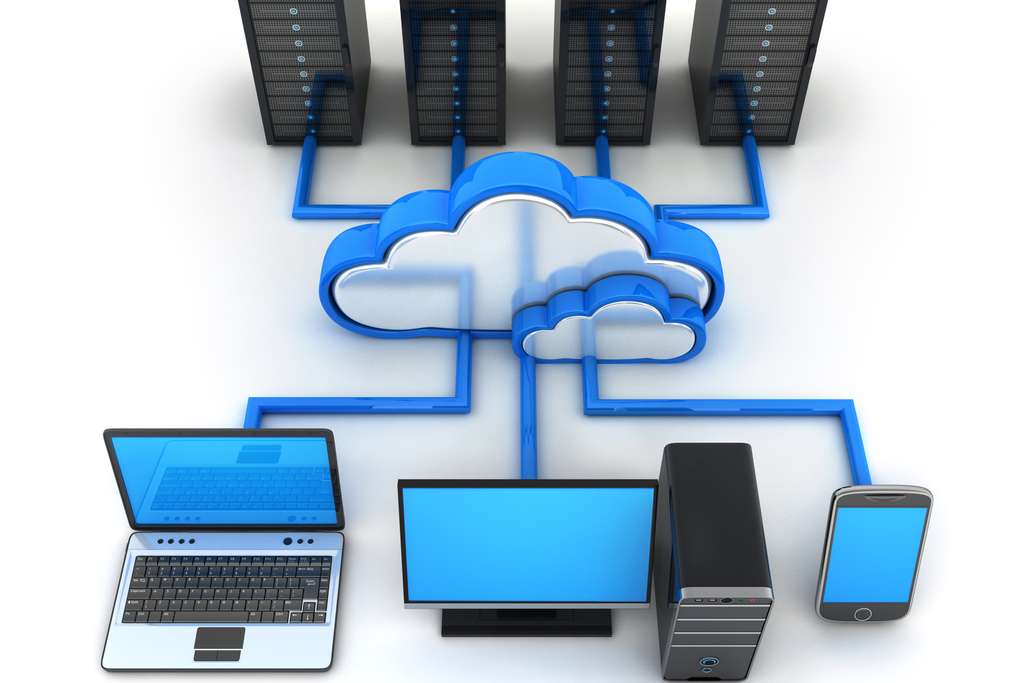– Daddy, what are clouds made of?
– Linux servers, mostly.
Cloud computing, cloud technologies, cloud migration. The hype about the cloud is affecting the majority of businesses around the world. According to Leftronic, 90% of companies are using it one way or another.
The wide array of possibilities offered by the virtual storage and computing has changed the way many companies work, allowed new growth possibilities, cut costs, and helped gain a competitive edge.
Why don’t all companies take full advantage of the cloud? The reason is usually the lack of information and an abundance of myths. Let’s take a closer look at what the cloud is and discuss the most common cloud myths.
What Is Cloud Computing?
In short, cloud computing involves storing your data and programs on a remote hard drive and accessing them via the internet. The name goes back to the diagram that represented the computer network. In it, the internet looked like a white puffy cloud.
Cloud computing delivers storage and services on-demand and pay-as-you-go basis.

When you use your hard drive to store data or run programs, you are doing local storage and computing. When you access your data and software over the internet, you are doing cloud computing.
The basic example of cloud computing involves uploading a file to Google Drive at home and accessing it from the computer in your office. By generating a link to the file, you can allow anybody to access it from anywhere as long as there is an internet connection.
Businesses can take advantage of different types of cloud services, including the most popular:
Software as a Service (SaaS)
Public cloud computing option, which provides access to apps via any browser. The most popular examples are Salesforce, Google Apps, and Microsoft Office 365. Instead of downloading software, you can use it through the internet.
Infrastructure as a Service (IaaS)
A self-service for working with computers, data analytics tools, VPNs, app monitoring, networking, and storage. Without buying hardware, you can take advantage of the entire network infrastructure over the internet. Basically, you are renting space to set up a virtual infrastructure online. The most common examples are Microsoft Azure, Amazon Web Services, and Google Compute Engine.
Platform as a Service (PaaS)
This service is created mainly for software developers. You have all the tools to develop software online, including operating systems, databases, and web servers. All tools needed for custom app development are available. Well-known PaaS providers are Google App Engine, Windows Azure, and Salesforce. You can use these platforms to run and manage business apps.
History of Cloud Technologies
Cloud computing appeared in the early 2000s. However, the concept of a rentable hard drive came around much earlier. Back in the 1960s, computer bureaus would allow other companies to rent their computers instead of buying them. These services lost their appeal when personal computers became affordable.
In the 2000s, the concept came back in the form of application service providers and utility computing. Cloud computing followed with the emergence of Amazon’s Elastic Compute Cloud product in 2006.
For many years, companies have been renting remote computers on which they ran their software. Then Google started offering browser-based apps. Eventually, numerous SaaS, PaaS, and IaaS options came to the market, turning the cloud computing into what we are using today.
7 Common Cloud Myths Debunked
Even though cloud computing seems to be straightforward, numerous myths swarm around it. Let’s debunk a few of them right now.
Myth#1
Working on the cloud isn’t safe is one of the common cloud myths.
Truth: While cybersecurity problems can’t be underestimated, working on the cloud comes with the same number of issues as on-site computing. In the cloud, the responsibility for secure operation is shared by you and the cloud service provider.
Myth#2
Cloud migration is too tough, costly, and time-consuming.
Truth: Migration projects of any size require careful preparation and planning. With the experts handling the migration, it can go quickly and smoothly. The speed depends on the volume of data and the number of apps that require moving.
Myth#3
After moving to the cloud, you can fire your IT administrator.
Truth: When you move to the cloud, your IT administrator takes on a new role as an advisor. Even though the cloud service provider handles security and network management, the company still needs an IT professional to assist with cloud-related operations.
Myth#4
Using the cloud means relinquishing control.
Truth: While you can’t physically touch the server your data is on, you still have the same control over work processes, data flows, accesses, and changes. By paying for cloud services, you are maintaining secure access to your data and software.
Myth#5
Another one of the common cloud myths is that using the cloud is more expensive than working with an on-site infrastructure.
Truth: Depending on the services you need, the amount of data you store, and the number of users with permission to access the cloud, it could be more expensive. However, you only pay for the computing power you are actually using.
Meanwhile, security and maintenance are part of the cost. Cloud migration can help you scale your business, cut hardware costs, enhance security, promote remote collaboration, and much more.
Myth#6
Everything can be moved to the cloud.
Truth: This cloud myth implies that the cloud is a magic cure for all the problems your company is facing. However, not all infrastructure and systems can be moved to the cloud. Proprietary and legacy enterprise systems may have to be fully rebuilt to function online.
Myth#7
It’s impossible to meet compliance requirements on the cloud.
Truth: Complying with industry-specific laws and regulations is a big concern for many companies. Most of these compliance requirements can be met on a cloud. In fact, using a cloud could make such compliance simpler. For example, a security feature like data-at-rest encryption can help you meet the data destruction requirements for some standards.



